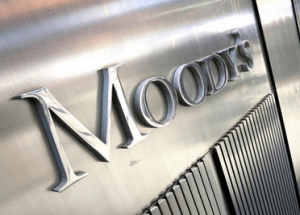Moody’s assigns first-time Baa1 issuer rating to West African Development Bank
 The ratings agency, Moody’s announces that it has assigned a first-time foreign and local currency issuer rating of Baa1 to the West African Development Bank (BOAD).
The ratings agency, Moody’s announces that it has assigned a first-time foreign and local currency issuer rating of Baa1 to the West African Development Bank (BOAD).
Moody’s indicated that the following are the factors for the stable outlook rating:
(1) Moody’s low assessment of BOAD’s capital adequacy, which is driven by weak borrower quality, and moderate levels of non-performing loans (NPLs), weighing on asset coverage and leverage levels that have been boosted thanks to a large infusion of equity from the bank’s Energy Development Fund. The assessment also reflects risks associated with the bank’s plan to expand non-concessional lending in the coming years.
(2) Moody’s very high assessment of BOAD’s liquidity which is primarily supported by BOAD’s access to refinancing from the Central Bank of West African Countries (Banque Centrale des Etats d’Afrique de l’Ouest
(BCEAO)).
(3) Moody’s assessment of medium strength of member support balances the strong willingness of members to support the bank against their limited overall ability to do so. Shareholder ability to support is tempered by the shared exposure to systemic risks among BOAD’s West Africa shareholders, and the correlation between shareholders and borrowers.
Among others, the rationale for the rating include Moody’s assessment of its weak capital adequacy.
“Past efforts to bolster the bank’s balance sheet resulted in the conversion of the bank’s Energy Development Fund (EDF) into equity, boosting many of the bank’s asset coverage and leverage ratios,” Moody’s said.
However, the bank suffers from weak borrower quality, due largely to the bank’s mandate to promote economic development in the West Africa Economic and Monetary Union (WAEMU) countries — its regional focus means assets are necessarily concentrated, operating conditions difficult, and its activities expose it to significant credit risk in a region that has had numerous periods of economic and political turmoil, it added.
Moody’s holds the position that the bank’s NPL levels are moderate, averaging 4.3% over the last seven
years, and though NPL’s coverage by guarantees and provisions have increased, it nevertheless remained below 100% in 2014 at 91%.
In particular, the Baa1 rating incorporates risks derived from BOAD’s planned expansion over the coming 2015-2019 strategic period, particularly in the non-concessional segment of its lending portfolio, primarily through borrowing on international and regional capital markets which means that BOAD will increase its overall leverage, and that NPL levels risk increasing since most NPLs are derived from the private sector lending that is being targeted for expansion in the bank’s strategic plan.
By Emmanuel K. Dogbevi
